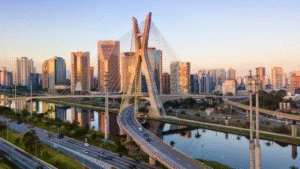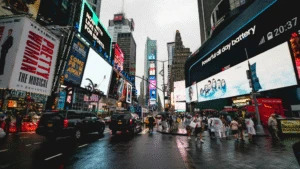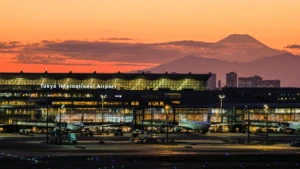For today’s business traveler—especially small business owners, hybrid professionals, and eco-conscious explorers—the dream of combining work, culture, and adventure is more accessible than ever. But with this freedom comes responsibility. As a digital nomad, choices ripple across communities and ecosystems, shaping the sustainability of the places visited and the planet as a whole.
Sustainable travel extends far beyond offsetting flights or recycling bottles. It involves weaving eco-conscious habits into daily routines, from where to stay and how to move, to the way to eat, work, and connect with local cultures.
This article offers practical, proven strategies for nomads who want to enjoy the world without leaving a heavy footprint. By the end, there’s a complete toolkit of specific actions, apps, and mindset shifts that help travelers move lighter, work greener, and make a positive impact wherever they roam.
Remote Work’s Environmental Impact and Opportunities
Nomadic life offers flexibility, cultural exchange, and adventure—but also comes with hidden environmental costs. Frequent flights, short-term rentals, and the demands of remote work all add up. Yet, digital nomads are uniquely positioned to model responsible travel and advocate for change, thanks to their mobility, global perspective, and influence within the remote work community.
Adopting sustainable practices not only reduces carbon footprints but also deepens connections to each destination, supports local economies, and helps preserve the very places that make this lifestyle possible. It benefits conscience, community, and experience equally.
For a long-term stay facilitated by a visa, you can find the best cities for digital nomads to suit your needs. If you’re planning a shorter trip, you can explore a variety of digital nomad destinations that fit your style.
Green Accommodations and Eco-Certified Properties
Green certifications make the decision easier. Look for hotels and rentals that hold recognized certifications such as LEED, Green Key, or EarthCheck. These properties implement energy-efficient lighting, water-saving fixtures, waste reduction programs, and often source food and amenities locally.
Ask the right questions before booking: Does this property have a sustainability policy? Are there visible efforts to reduce waste and conserve resources? Small choices here create significant differences in overall environmental impact.
For nomads seeking a more structured environment, many corporate hotels now cater to digital nomads with amenities like co-working spaces and green initiatives.
Transportation Strategies That Lower Carbon Emissions
Slow travel transforms the nomad experience. Air travel represents one of the biggest contributors to a nomad’s carbon footprint. Consider staying in one place for weeks or months to reduce flights and deepen local experiences. When flying becomes necessary, use tools like Google Flights to compare carbon emissions across airlines and routes.
Ground transportation requires mindful choices. Walk, bike, or use public transit whenever possible. In New York, the subway and Citi Bike offer efficient, low-impact ways to explore. When car rental becomes necessary, choose electric or hybrid options, or opt for car-sharing services that prioritize fuel efficiency.

Local Dining and Conscious Shopping Choices
Supporting local dining benefits everyone involved. Skip imported snacks and dine at restaurants that source ingredients locally. Visit farmers’ markets and choose seasonal produce—this cuts down on food miles and packaging waste while providing authentic regional flavors.
Conscious shopping creates lasting impact. Seek out businesses with sustainable practices, such as zero-waste stores, refill shops, or brands that use recycled materials. Avoid single-use plastics by carrying reusable water bottles, coffee cups, and shopping bags.
Daily Habits That Reduce Environmental Footprint
Morning routines set the tone for sustainable days. Start with reusable coffee cups and water bottles. Meal prep with local, seasonal ingredients. Walk or bike to coworking spaces or meetings whenever possible.
Evening habits matter equally. Unplug chargers and turn off lights when leaving accommodations. Participate in local sustainability events and workshops. Share sustainable practices with fellow travelers and online communities.
Small acts compound over time. These daily choices, repeated across months and countries,
Community Engagement and Positive Local Impact
Local engagement creates lasting positive change. Participate in community cleanups, volunteer with environmental groups, or support community-led conservation projects. These actions help the planet while building meaningful connections with people and places visited.
Digital platforms extend influence beyond physical presence. Use social media and travel blogs to highlight sustainable businesses, eco-conscious practices, and challenges faced by local communities. Advocacy amplifies individual impact and inspires others to adopt similar practices.
Practical Strategies for Eco-Conscious Remote Work
Smart travel timing makes a difference. Travel during off-peak seasons to reduce pressure on local ecosystems and infrastructure. Pack light to lower fuel consumption during transit.
Energy and water conservation becomes automatic with practice. Work from shared, energy-efficient spaces rather than private rentals with high utility consumption. Take shorter showers, reuse towels and linens, and minimize single-use items.
Waste reduction strategies travel well. Bring reusable kits including bottles, utensils, and bags. These are key for a zero-waste business trip. Participate in local environmental initiatives, from beach cleanups to tree-planting days. Support local governments and businesses that prioritize sustainability through spending choices and advocacy.
Building Your Sustainable Travel Foundation as a Digital Nomad
Building your sustainable travel foundation as a digital nomad involves embracing three core principles: choosing environmentally friendly accommodations, adopting slow travel, and engaging meaningfully with local communities. These habits not only reduce your environmental impact but also deepen the quality of your travel experiences.
Digital nomads may move frequently or settle for extended stays—sometimes months or even years—in various locations. Regardless of the length of stay, adopting sustainable practices turns travel into a conscious lifestyle choice. By aligning flexibility and freedom with responsibility, sustainable digital nomadism fosters authentic connections, personal fulfillment, and positive change for the planet.






